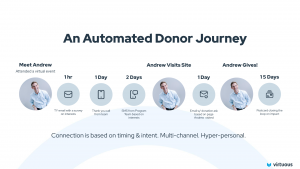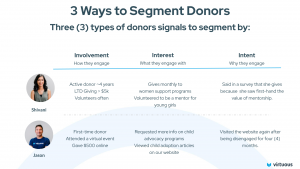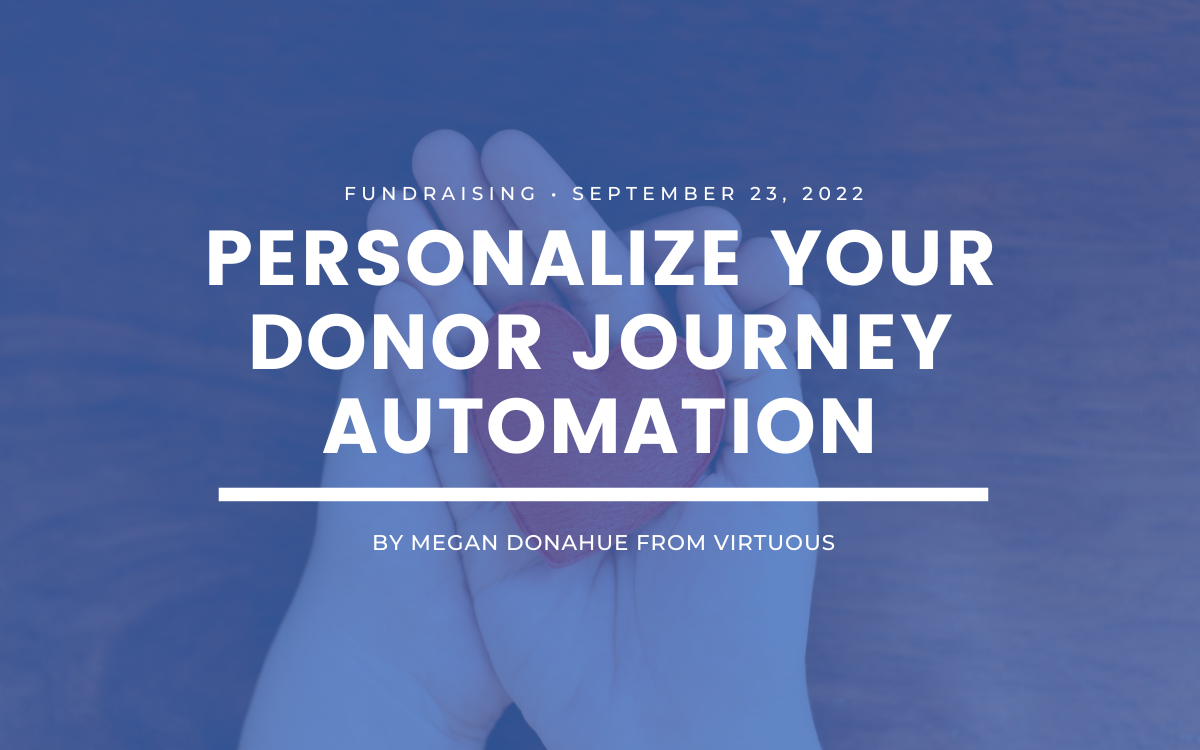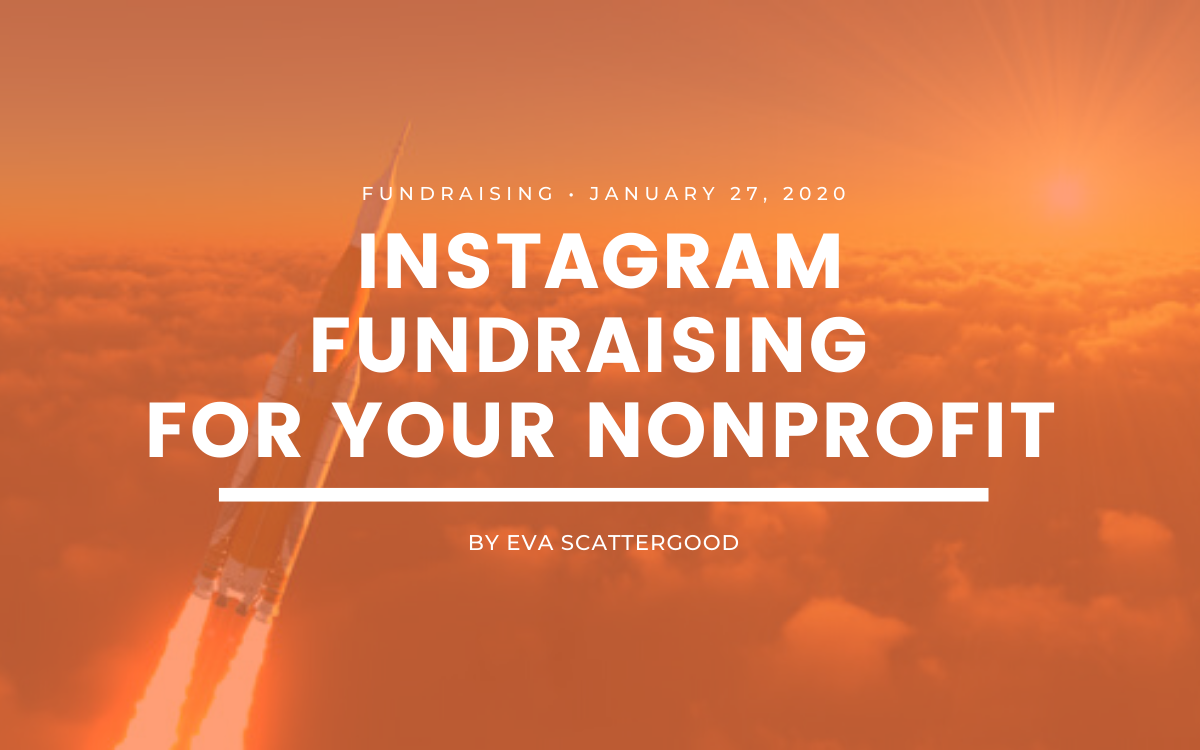Personalize Your Donor Journey Automation
6 min to read ✭ To make donor journey automation responsive, you have to make it personal. Meaningful donor journeys start with personalization. Learn how to get started!
If the first thing you think of when you hear the word “automation” is some kind of robot cranking out form letters, you may be skeptical that it can be a useful tool for delivering meaningful experiences to your supporters. But, with a few simple best practices, you can create personalized, responsive donor journey automation that connects with your donors at scale, while saving you time and increasing your effectiveness.
It’s Not About Robots
Marketing automation is a tool you can use to get the right messages to the right people at the right time, but the content of those messages is all human. The marketing automation just makes sure that you don’t have to sift through individual donors to decide who gets what, or hit “send” every time. Rather than generic communications and one-size-fits-all fundraising messages, it can help you create donor journeys for all of your donors, delivered consistently.
Automated Donor Journeys
A donor journey is a path a supporter follows that takes them to their first act of generosity and beyond. It starts when they become aware of your organization, then continues as they become more and more engaged. After their first gift, the journey continues toward deeper engagement.

Nonprofits guide the donor journey through communication. A sequence of touchpoints, based on donor personas and the stage of their engagement, can help draw supporters closer to your organization and deepen their connection to the cause.
But creating these journeys without automation is nearly impossible to do at scale. You might be able to create hand-crafted journeys for a small group of major donors, but in order to reach everyone, you’ll need a little help from your technology.
Sending a personal thank you email to each individual new donor who gives their first gift would take up far too much of your time, but with automation, you can make it happen instantly. You can even follow up with a welcome series of emails, mailed pieces, and phone calls–an entire new donor journey!
The experience is automated, but the impact is personal. That is, as long as you personalize your messages.
Personalization Is Everywhere
Why does it matter if a donor’s journey is personalized? Because donor expectations have changed. With every brand they interact with providing personalized, relevant experiences, your supporters have come to expect that you know them. A nonprofit email addressed to “Dear Friend” feels different when even the pet food store remembers your name and what you ordered last.
Technology has driven this change in expectations, transforming the way we learn, socialize, and make decisions. Unfortunately, many nonprofits have not kept up with this transformation. They offer personalized experiences to major donors and generic mass messages to everyone else. Understandably, small and mid-level givers don’t connect with these messages and impersonal experiences and drift away.
Personalization isn’t just about feelings, it also drives results. Emails with personalized subject lines are more likely to be opened and 88% of U.S. marketers have seen measurable improvements with personalization.
Personalized experiences help donors connect with the organization, making it more appealing to stay involved. Donor journey automation brings that personalized experience to everyone.
How To Personalize Your Donor Journey Automation
Personalizing your donor journey automation doesn’t have to be complicated. While you can get very sophisticated, there are three simple best practices that will make your journeys more personal for donors: using your merge fields strategically, thoughtful segmentation, and creating journeys by persona.
Get More From Merge Fields
Using merge fields is one of the easiest ways to personalize your communications. It allows you to insert personalized information from your CRM into your text. Each field or tag relates to one field on your donor record.
If you do nothing else to personalize your donor journey automation, use merge fields to ensure you’re addressing your supporters by name. That little change alone can make a big difference in how personal a message feels.
Merge fields can also help you insert information like giving history, gift amount, volunteer role, or more.
When using merge fields, it’s important to test your results before you hit send. Make sure to set a default value that makes sense if there’s no information in the field itself, so you don’t send an email to “Dear______ ,” or “Hi N/A!”
Start With Segmentation
Segmentation is the key to personalization at scale. Since you don’t want to send the same message to your entire email list, you need to break the audience up.
It’s common to segment donors by giving amounts, but this is not the most personal way to approach segmentation. The amount someone can give doesn’t tell you anything about what they care about, why they’re involved, or what is most relevant to them–it only tells you about their giving capacity.
Instead, consider segmenting donors by their:
Involvement: How do supporters engage with you? Are they monthly givers? Annual givers? Regular volunteers? First-time givers? Do they attend events?
Understanding your supporters’ involvement is crucial for effectively personalizing their journey. You don’t want to send a “become a volunteer” email to someone who is volunteering already, or solicit a monthly giver without acknowledging their loyalty.
Interests: What area of your work is most interesting to the donor? It’s a lot easier to attract someone’s attention when you’re talking about something they’re interested in.
For instance, at an animal shelter, you may find that some of your donors are much more interested in dogs than cats. If you’re an international development organization, some of your donors may be especially passionate about clean water access, while others are more interested in job training, or children’s programs.
When you segment by interest, you can make your donor journey instantly much more relevant and personal.
Intent: Why does the supporter engage with you? What brought them to your organization? What is the good they’re hoping to do in the world?
A supporter who participated in your cancer support groups may have a different intent than a person who lost a family member to cancer. A supporter who adopted their pet from your shelter has a different connection than a neighborhood animal lover. When you can speak directly to the donor’s intent, you make their journey more personally meaningful and satisfying.

When you segment donors by these passions and behaviors, you’ll be able to tailor donor journeys to each segment in a personalized way that speaks to what they actually care about, instead of only their giving capacity.
Create Donor Personas
Once you’ve segmented your donors into groups, take your personalization one step further by creating a donor persona for each one.
A donor persona is a semi-fictitious character that represents a group of donors. It helps guide you as you personalize communications by giving you a “person” to keep in mind. As you create this character, you’ll use real demographic information and what you know about donors’ interests, involvement, and intent.
For example, as you segment your donors by involvement, you might find that you have volunteers who are also donors. Look at your data and talk with the volunteer department at your organization to start to get a picture of who a typical volunteer donor might be. Use the real demographics and information you find to create your persona.
Consider:
- Who is this person?
- What is most important to them about your work?
- Why do they give?
- What is their age, family situation, job?
- What kind of messages do they like?
- What communication channels do they prefer?
Using this information, write a brief description of your donor persona:
Vicki Volunteer has walked dogs at the shelter for five years. She’s a married mother of two. Her kids used to volunteer with her, but these days their schedules are too crowded. Vicki is a busy professional, but she prioritizes her weekly dog walks because she adopted her own dog from the shelter and has warm feelings about it. Vicki is a dog person, who instantly falls in love with every mutt she encounters. She’s good at checking email, she hates the phone…unless you text.
Can you picture what an automated donor journey for Vicki might look like, and how it would be different from a generic “donor” journey? You now know to send “her” lots of dog pictures, acknowledge her volunteer and donor milestones, take a holistic view of her generosity, and to text and email, not call. By keeping your personas in mind, and creating donor journeys, especially for those personas, you’ll deliver a much more personalized experience.
Personalized Donor Journey Automation Is Within Reach
You don’t have to settle for generic messages or robotic automation for your small and mid-level givers. When you follow these three best practices to create personalized donor journey automation, you’ll be able to deliver meaningful experiences to every donor.





